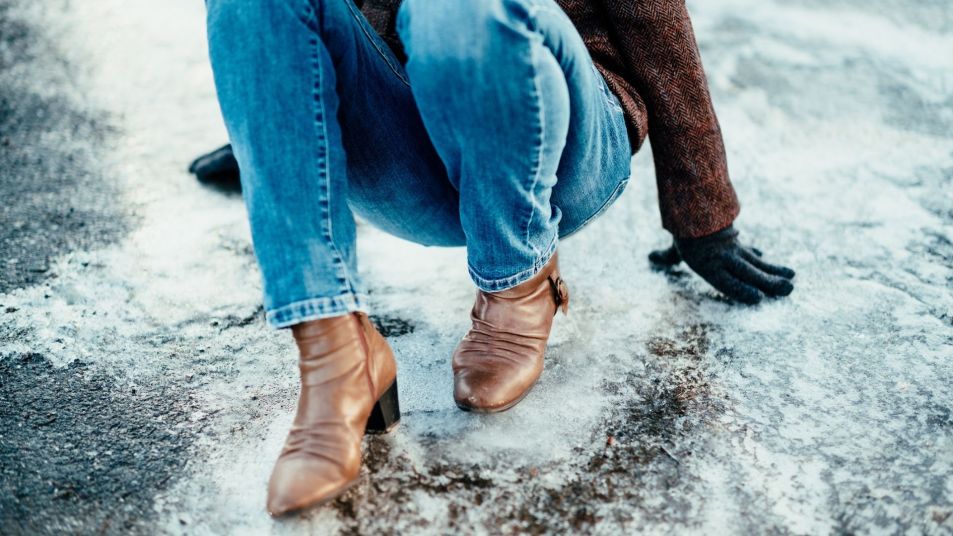Don’t Slip on the Ice! 6 Rock Salt Alternatives That Are Earth (And Pet) Friendly

People are afraid of many different things: Heights, grizzly bears, flying in airplanes, snakes, germs, you name it. I can relate to some of these, but one of my biggest fears is slipping on ice. Icy sidewalks, driveways, steps, even a pond that’s iced over — I can’t stand the feeling of the ground sliding out from under me. And while many fears can be overcome as we age, for me this particular fear seems only to have increased with time.
As a result, I’ve been an avid consumer of rock salt for years. So imagine my dismay when I found out that although this compound works well on icy sidewalks, it’s terrible for the environment. And while you might use rock salt, also known as ‘road salt’, in small amounts, it’s also used in bulk to de-ice roads and highways, so the less of it used overall, the better.
What’s so bad about rock salt — and what can you use instead? Read on for answers!
Rock Salt Is Bad For The Environment
As salt melts the ice on steps, sidewalks, and roads, it trickles into waterways and flora, creating what biologists call ‘dead zones’. Dead zones are bodies of water where no aquatic life can survive due to a lack of oxygen. These zones, usually estuaries, are caused by toxins and chemicals that flow down from larger rivers and streams.
In large quantities, rock salt causes corrosion. It might be a quick and cheap-at-the-outset solution to making icy roads, bridges, and highways safe for traveling, but the ultimate costs far outweigh the gains. The EPA, or Environmental Protection Agency, reported in 2020 that damage to our national infrastructure from road salt required five billion dollars in repairs.
Rock Salt Is Harmful To Pets
If you have a dog and walk them often, make sure to use a pet-friendly de-icing product on your steps and walkway. Rock salt can be toxic to our dog and cat friends if consumed, causing dehydration and vomiting. It’s can also cause painful chemical burns and irritation on their paws. The best way to keep your pet safe from the damaging effects of rock salt is to use another de-icing agent and, because you’ll likely encounter rock salt if you walk on main roads and sidewalks, to apply a paw-protecting wax before heading out. (Dog booties are another great way to protect your pup’s paws!)
Rock Salt Alternatives
Just because something is popular doesn’t mean it’s the best. (This applied back in high school, and it still applies today.) Here are some eco-, pet, and concrete-friendly alternative de-icers to try this winter:
- Sand Sand absorbs sunlight, which helps to melt ice, and provides traction as well.
- Coffee grounds A great way to make the most of that morning cup of coffee, no need to toss them in the trash after brewing. Sprinkle liberally on your driveway instead!
- Gravel/Wood chips/Straw Unlike sand, these methods don’t help melt the ice but are great for traction beneath your feet.
- Wood ash If you have a wood-burning stove or working place/fire pit, it’s likely you’ll have an abundance of ash around, which can easily be gathered and sprinkled on steps and sidewalks.
A bad fall really takes the fun out of winter. Luckily, there are safe ways to make sure you stay steady and upright this season, while keeping our environment, wildlife, and furry friends safe and healthy. Sounds n-ice to us!












